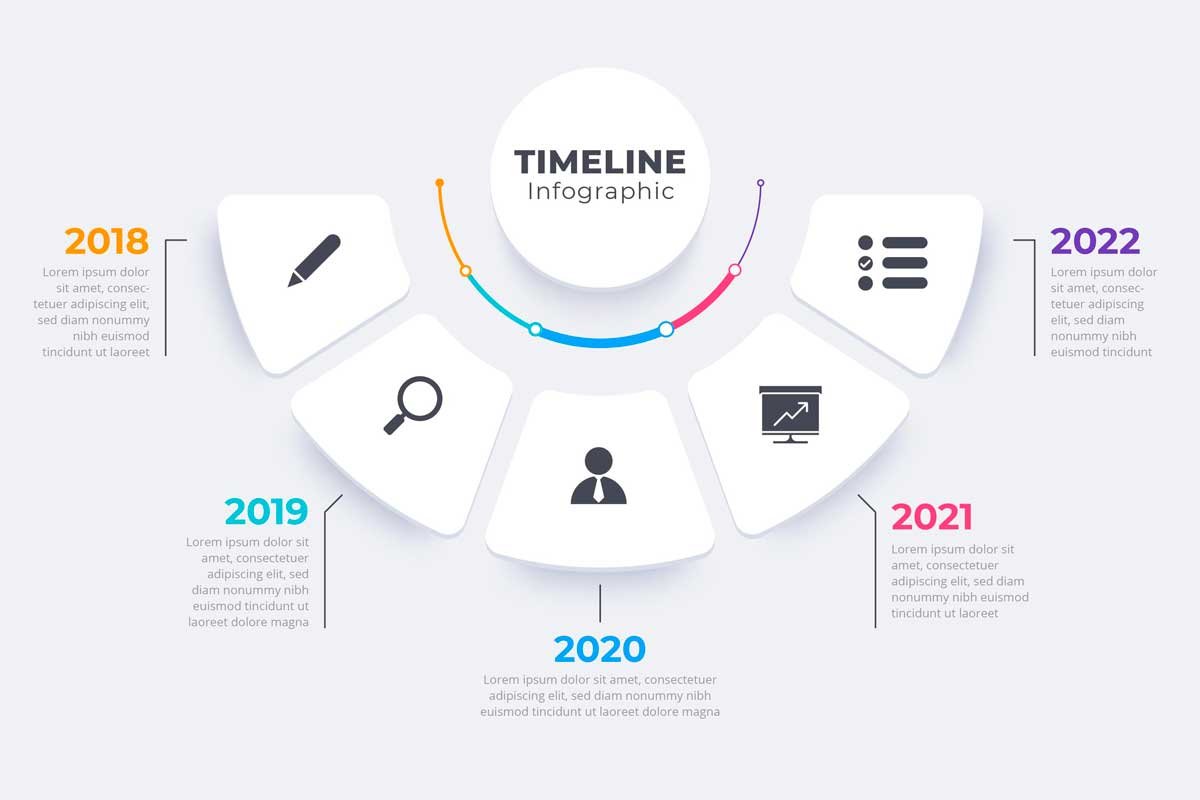10 Ways to Come Up With Infographic Ideas
Infographics are excellent for adding visual interest to your blog posts and communicating complex information quickly and easily. But they’re not exactly easy to make. Designing an infographic takes a lot of time, effort, and skill. Although the visual aspects of an infographic are vital, the concept and ideas used to create an infographic are just as important. Coming up with ideas can be tedious and strenuous, especially if you’re experiencing an idea block.
Infographic Ideation Tips
In this article, we will list ten tips you can follow to make finding infographic ideas a tad easier.
List your goals and objectives
Before you start to create your infographic, it is vital to sit down and list out your goals and objectives. What do you want to achieve with this infographic? What information do you want to include? Once you know what to accomplish, you can begin planning the design and layout of your infographic.
To create an infographic without any concrete goals is a recipe for chaos. It’s like navigating a foreign land without a map or itinerary. To avoid going around in circles, it’s important to identify your goals and objectives upfront.
Look at current events and trends
When coming up with ideas for your infographic, it is helpful to look at current events and trends. What topics are people talking about? What issues are people interested in? By keeping up with current events, you can ensure that your infographic is relevant and engaging.
A good way to explore current events is by keeping up with recent news and what’s happening in the world. You can also use social media to see what topics are trending.
Look at historical data
If you are looking for information to include in your infographic, it is helpful to look at historical data. By examining past trends, you can better understand how certain events or phenomena have played out over time. This information can be invaluable when trying to make predictions.
When looking at historical data, it is crucial to consider the source. Make sure that you are looking at reliable and accurate sources of information.
Collect as many references as you can
When creating an infographic, it is essential to have a lot of references at your disposal because this will allow you to back up your claims with solid evidence and make your infographic more credible. In addition, having a large pool of references will give you a variety of sources to choose from when designing your infographic.
There are many places you can collect references from. For example, Pinterest is a great place to find visual references, while Google Scholar is a great place to find academic references. You can also use online databases like JSTOR and ProQuest to find studies and journals.
Jot down any idea that comes to mind
When brainstorming ideas for your infographic, it is important to write down any idea that comes to mind. Even if you don’t end up using the idea in the final product, it can be helpful to have a large pool of topics to choose from. This will make it easier for you to come up with an interesting and relevant topic.
The key here is to not self-edit too much. Just let the ideas flow and worry about narrowing down the list later.
Narrow down your ideas
After you have generated an extensive list of ideas, it is time to narrow them down. Which topics relate the most to your goals and objectives? Which ideas can you back up with evidence? Once you have narrowed down your list of ideas, you can begin planning the layout and design of your infographic.
Check out your competitors
If you are having trouble coming up with ideas for your infographic, it is helpful to know your competitors and what they’re doing. What topics are they covering? What design elements are they using? By looking at your competition, you’ll better understand what works and what doesn’t.
You can see what content on their site or social media platforms are ranking, what keywords they’re ranking for, and what content received the most engagement. Today, you can find a lot of online tools that can help you perform a thorough competitor analysis.
Explore infographics on different platforms
There are various social media platforms where you can find infographics. In addition to online databases and search engines, you can also check out social media sites, blogs, and forums. By exploring a variety of different platforms, you will have a more comprehensive selection of infographics to choose from when creating your own.
Understand your audience
When creating an infographic, keeping your target audience in mind is crucial. If you target a general audience, you will want to create an informative and visually appealing infographic. If you are aiming at a specific group of people, you will want to tailor the content and design of your infographic to match their interests. For instance, if you are a VPS server provider, you need to target your infographics for people looking for VPS hosting.
Without a target audience, it can be challenging to come up with good ideas for your infographic since you won’t know who you’re making the infographic for. Also, creating content without knowing who’s reading it can be wasteful since there’s a chance an audience won’t even be interested in the content.
Start outlining your infographic
After having a general idea of what you want to include in your infographic, it is helpful to start with a rough outline. This will give you a framework to work from and make it easier to organize your thoughts. In addition, beginning with an outline will help you stay on track as you develop the content for your infographic.
Several different software programs can help you create an outline, such as Microsoft Word or Google Docs. Alternatively, you can use a mind mapping tool like MindNode or Mindmeister.
Wrapping Up
As you can see, many different steps go into creating an infographic. Although creating an infographic isn’t easy, it is definitely doable. The key to a stellar infographic is a compelling idea.
By following these tips, you can increase your chances of creating a successful infographic and come up with a variety of ideas with ease. So what are you waiting for? Get started today!





